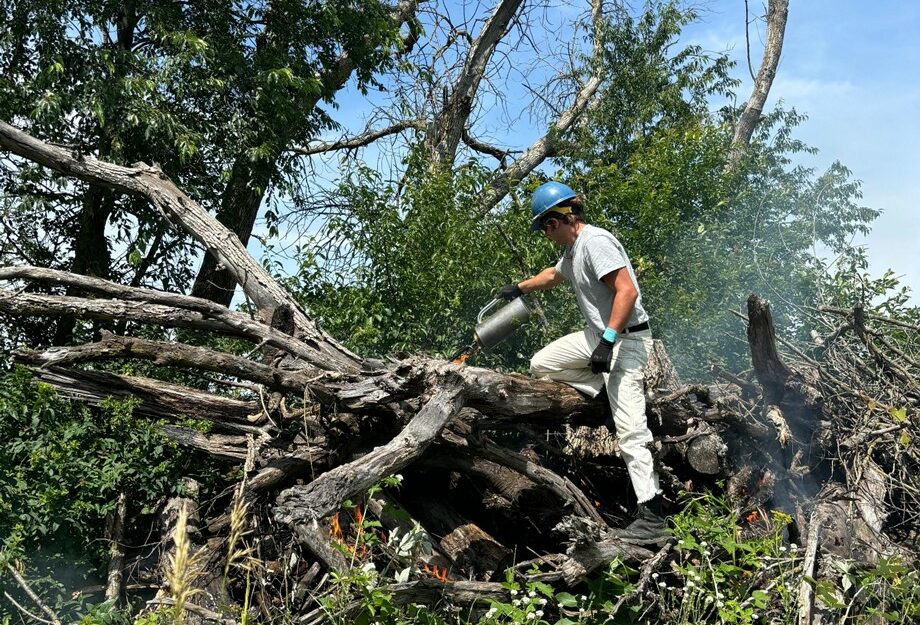Destruction: a Helpful Tool for Conservation

By Emma Klemmensen, Mankato 2 Field Crew Member / AmeriCorps Member
The ecosystem is like a body; it can do its own healing and return to its equilibrium, but will do so much more effectively when given the aspects that encourage this regeneration. Because of this, although not as intuitive as the roles of protection and sustainability within conservation, destruction is the river by which the direction and effectiveness of progress can be rerouted.
The majority of the intense conservation that we do here in Southern Minnesota consists of falling trees and clearing areas of woody plants. However, in addition, the removal and spraying of vegetation and prescribed burns are also examples of regular stewardship. Each of these activities or methods has important implications on the outcomes of environmental management and stewardship, and they each have specific roles.
Fire is especially important in this category because there tends to be a general distaste for it. Fire is seen as especially destructive, even more so considering that the other aspect of fire within conservation is the fighting of wildfires; however, it’s important to consider the capabilities that fire has as an environmental steward. According to the Minnesota Department of Natural Resources (DNR), prescribed burning is important to management because it “Combats trees and shrubs that shade out prairie and other shade-intolerant plants, removes old vegetation to make room for new growth, shifts soil nutrients to a state more favorable to prairie species, helps reduce the spread of invasive and pest species, consumes excess fuel, such as dead and downed trees, reducing dangerous and intense wildfires, and burning in patches creates a mosaic of habitats for a variety of plants and animals” (“The Benefits of Prescribed Fire on Natural Areas”).
The destruction most questioned in the field (in my experience) has been the removal of trees, which happens for countless reasons including prairie restoration, trail management, invasives and disease removal, and the removal of hangups and dead trees. The general public is weary of chainsaws similarly to the way they perceive fire. Because of this, it’s important to bring awareness to the abilities and necessity of destruction within conservation. Moving forward we can do so by communicating with friends, family, and peers about such topics and by making a conscious effort to explain our tasks well when asked by bypassers in the field.